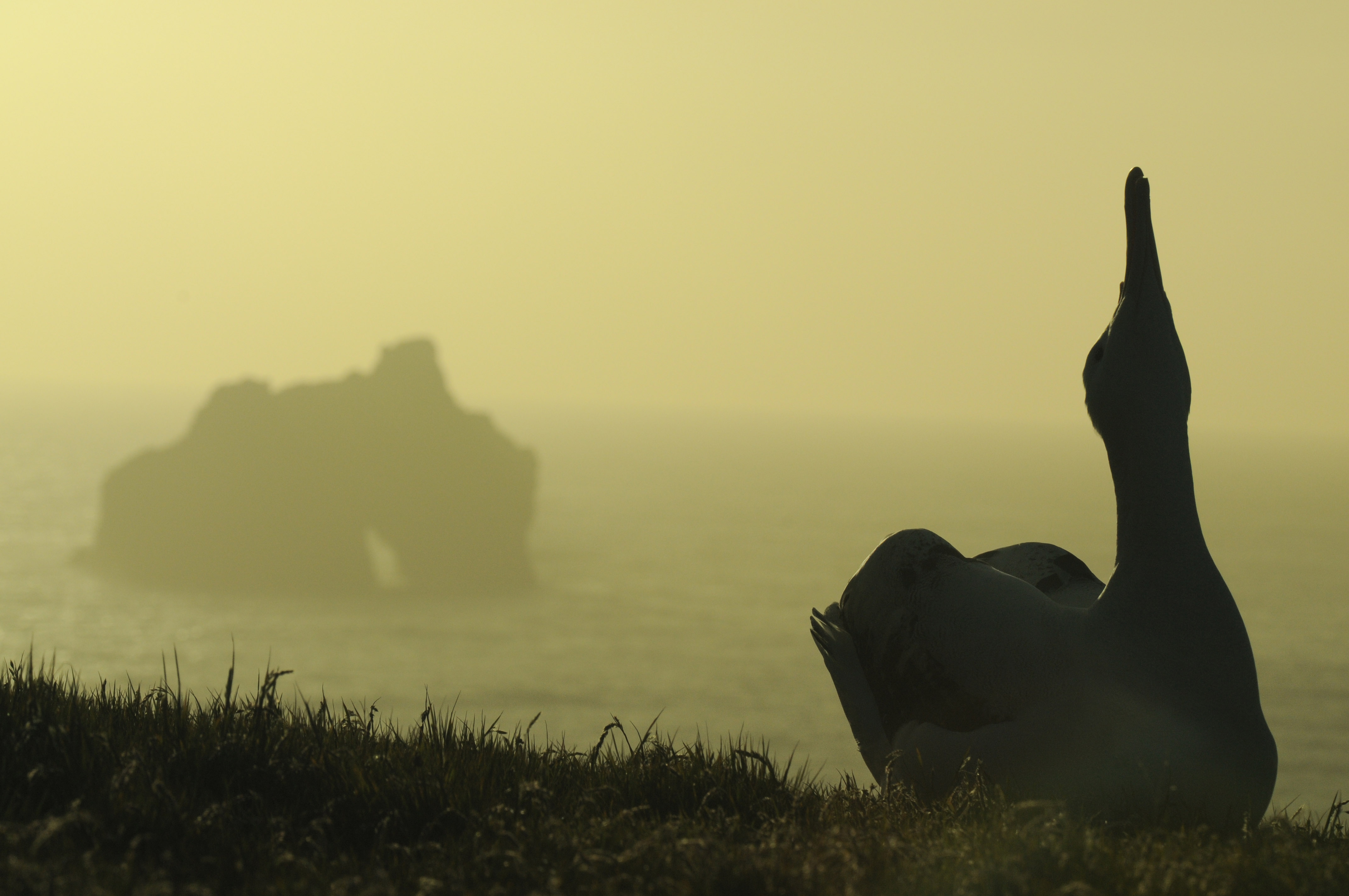Wandering Albatross at sunset, Île de la Possession, Crozet Islands; photograph by Franck Theron
Ruijiao Sun (Biology Department, Woods Hole Oceanographic Institution, Massachusetts, USA) and colleagues have published open access in the journal Ecological Monographs on life-history outcomes of a male-skewed population of Vulnerable Wandering Albatrosses Diomedea exulans on Île de la Possession, Crozet Islands, caused by fishery bycatch.
The paper’s abstract follows:
“Many animals form long-term monogamous pair bonds, and the disruption of a pair bond (through either divorce or widowhood) can have significant consequences for individual vital rates (survival, breeding, and breeding success probabilities) and life-history outcomes (lifetime reproductive success [LRS], life expectancy). Here, we investigated the causes and consequences of pair-bond disruption in wandering albatross (Diomedea exulans). State-of-the-art statistical and mathematical approaches were developed to estimate divorce and widowhood rates and their impacts on vital rates and life-history outcomes. In this population, females incur a higher mortality rate due to incidental fishery bycatch, so the population is male-skewed. Therefore, we first posited that males would show higher widowhood rates negatively correlated with fishing effort and females would have higher divorce rates because they have more mating opportunities. Furthermore, we expected that divorce could be an adaptive strategy, whereby individuals improved breeding success by breeding with a new partner of better quality. Finally, we posited that pair-bond disruptions could reduce survival and breeding probabilities owing to the cost of remating processes, with important consequences for life-history outcomes. As expected, we showed that males had higher widowhood rates than females and females had higher divorce rates in this male-skewed population. However, no correlation was found between fishing effort and male widowhood. Secondly, contrary to our expectation, we found that divorce was likely nonadaptive in this population. We propose that divorce in this population is caused by an intruder who outcompetes the original partner in line with the so-called forced divorce hypothesis. Furthermore, we found a 16.7% and 18.0% reduction in LRS only for divorced and widowed males, respectively, owing to missing breeding seasons after a pair-bond disruption. Finally, we found that divorced individuals were more likely to divorce again, but whether this is related to specific individual characteristics remains an important area of investigation.”
Reference:
Sun, R., Barbraud, C., Weimerskirch, H., Delord, K., Patrick, S.C., Caswell, H. & Jenouvrier, S. 2022. Causes and consequences of pair-bond disruption in a sex-skewed population of a long-lived monogamous seabird. Ecological Monographs doi.org/10.1002/ecm.1522.
John Cooper, ACAP News Correspondent, 11 August 2022

 English
English  Français
Français  Español
Español 